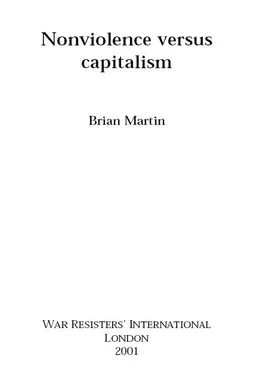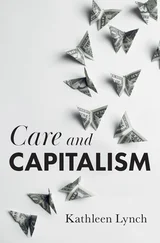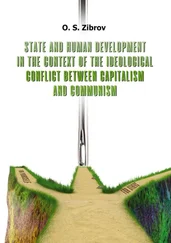However, the claim that capitalist interests are the driving force behind war looks much thinner in other cases, such as US involvement in the war in Vietnam in the 1960s and 1970s, [30] . An excellent attempt to explain the US military involvement in the Vietnam war as in the interests of capitalism is given by Paul Joseph, Cracks in the Empire: State Politics in the Vietnam War (Boston: South End Press, 1981), but his material suggests that the interests of state managers took priority over the interests of capitalism.
US and Australian government support for the 1975 Indonesian military invasion and occupation of East Timor, and NATO bombing of Serbia in 1999 to drive Serbian troops out of Kosova. There are natural resources in Vietnam, East Timor and Kosova, but there is little evidence that expected profits from these were big enough to justify the enormous expense of war.
Even a purely destructive war has benefits for corporations that produce weapons for the military. But these benefits have to be weighed against costs. If the government is funding massive military expenditures, then there is less money for other functions, including corporate subsidies and consumer expenditures.
The elimination of capitalism is unlikely to eliminate war, if states still exist. After all, there have been wars between socialist states, such as between China and Vietnam in 1979.
The key point is that the state is not simply a tool of capitalists, nor solely an “arena for class struggle,” but in addition has interests of its own. Capitalism and the state system have grown up together and are mutually supportive, but neither can be reduced to a puppet of the other. Hence a nonviolence strategy needs to address both systems of power.
Bureaucracy .The word “bureaucracy” conjures up images of government agencies that cause people headaches with their rules and regulations, commonly known as red tape. Sociologically speaking, though, bureaucracy is a way of organising work based on hierarchy, division of labour, rules defining tasks, and promotion by merit. The keys here are hierarchy and division of labour. In a bureaucracy, a worker is simply a replaceable cog.
Government departments are bureaucracies, to be sure, but so are most corporations. There are bosses at the top, layers of middle management, all sorts of rules, with everyone doing specialised jobs. Many other organisations are organised bureaucratically, including trade unions, churches, professional associations and environmental bodies.
Compared to slavery, serfdom or nepotism, bureaucracy is a great step forward. It offers predictability, reliability and accountability within its own rules and so can compare favourably to informal systems where decisions may be based more on personal favours, vindictiveness or whim (though these play a role in bureaucracies too). For all its advantages over previous systems, though, it is still a system that gives power to a few at the top and subordinates most others. It also makes it easy for outside bodies to control an organisation: only the bureaucratic elites need to be dealt with.
There are various non-bureaucratic modes of social organisation, including families (where individuals are certainly not replaceable cogs!), networks and workers’ control (where workers collectively make decisions about how to organise their work and what to produce).
Bureaucracy has become dominant only in the past few centuries, along with the rise of capitalism and the state system. [31] . Henry Jacoby, The Bureaucratization of the World (Berkeley: University of California Press, 1973).
It is an integral part of both, yet has its own dynamics. Bureaucratic elites operate to serve their own interests, even if this is at the expense of the organisation or its mandate. This is illustrated by the enormous salaries and share packages that many chief executive officers receive. This level of remuneration is seldom required to make the corporation more profitable, especially in cases where the company is losing money but the president gets a larger bonus. It is best explained by the power that organisational elites have to reward themselves, irrespective of the advantages to the organisation.
There is a lot of managerial rhetoric about flat hierarchies, team building, the network organisation and so forth, but the reality is that traditional bureaucratic hierarchy is alive and well. Bureaucracies are similar to authoritarian regimes: there is no freedom of speech, no freedom of assembly, no right to organise opposition movements and no ability to choose leaders. [32] . On bureaucracies as similar to authoritarian states, see Deena Weinstein, Bureaucratic Opposition: Challenging Abuses at the Workplace (New York: Pergamon Press, 1979).
It is often said that democratic rights end when you walk in the office door.
Some of the greatest advances for workers have been through organising in order to claim the right to strike and bargain for better wages and conditions. Yet in most workplaces rights are very limited indeed. Aside from legally protected actions, such as strikes — and these are legally protected only in some countries and under specified conditions — nonviolent action by employees is likely to lead to dismissal. Often just speaking out against the boss, or criticising the organisation on television, leads to harassment, demotion or dismissal. The same fate faces those who refuse to cooperate with instructions, who hold vigils or set up alternative decision-making methods. Most nonviolent action is considered illegitimate when carried out by employees. [33] . On nonviolent action within and against bureaucracies, see Brian Martin, Sharon Callaghan and Chris Fox, with Rosie Wells and Mary Cawte, Challenging Bureaucratic Elites (Wollongong: Schweik Action Wollongong, 1997.
Other systems of power .As well as patriarchy, the state and bureaucracy, there are quite a few other systems of power worth considering, including the military, racism, industrialism, domination of nature (including domination of nonhuman animals) and heterosexism. In each case, there are strong links to capitalism but the system of power is not easily reduced to purely a symptom of capitalism. These are not issues that can be resolved easily or finally. The main implication, in any case, is that overthrowing capitalism will not necessarily lead to solving other problems. Nor will addressing the other problems necessarily help in the struggle against capitalism.
There is no need to decide which issue is the “most important.” All systems of domination need to be challenged and transformed. Capitalism is certainly one of them, and that is sufficient rationale for developing a nonviolence strategy against it. In order to make this strategy as effective as possible, it is useful to recognise that there are other systems of domination also worth opposing and transforming, and that if possible the struggles against these systems of domination should be designed to be mutually reinforcing.
Whether capitalism is about to collapse or actually will collapse cannot be easily predicted. Nor is it obvious that collapse is a good thing. It might open opportunities for grassroots alternatives, [34] . L. S. Stavrianos, The Promise of the Coming Dark Age (San Francisco: Freeman, 1976).
but it might create a demand for state repression. The collapse of the Russian economy under capitalism in the 1990s — with a 50% drop in gross national product — did not seem to improve prospects for a better alternative. In any case, the possibility of collapse should be taken into account in developing strategy.
Whether globalism is a new phase in capitalist development or simply an extension and revision of national capitalist systems is important, [35] . See chapter 11.
but it is not clear how much this should affect the way a nonviolent struggle against capitalism is carried out.
Читать дальше

![Brian Jacques - Martin the Warrior [Redwall 6]](/books/128385/brian-jacques-martin-the-warrior-redwall-6-thumb.webp)










